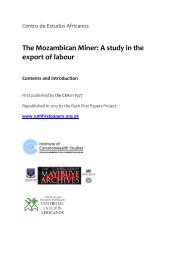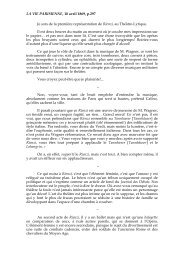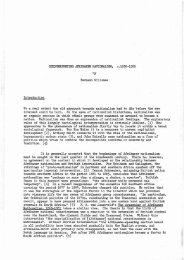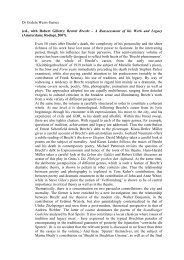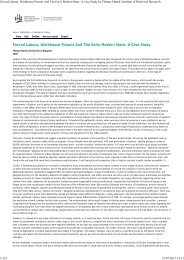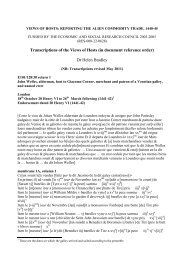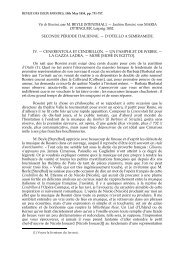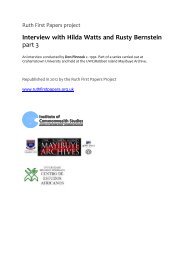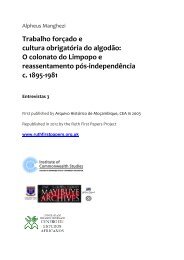Roraima: Brazil's northernmost frontier by John Hemming - SAS-Space
Roraima: Brazil's northernmost frontier by John Hemming - SAS-Space
Roraima: Brazil's northernmost frontier by John Hemming - SAS-Space
Create successful ePaper yourself
Turn your PDF publications into a flip-book with our unique Google optimized e-Paper software.
taking 30 hours or more for the run) and steady truck traffic, the highway has<br />
finally ended <strong>Roraima</strong>'s sense of isolation. The territory's population almost<br />
doubled during the first decade after the road was opened.<br />
Environmental concerns<br />
During the decade starting in the mid-1970s, an impressive area of reserves<br />
was designated in <strong>Roraima</strong>. In addition to the vast Indian reserves (which<br />
are also wildlife sanctuaries), the environmental agency IB AM A administers<br />
the Mucajai and Rio Anaua biological reserves, the Jatapu resources<br />
reserve north of the Waimiri-Atroari Indian territory, and the huge National<br />
Park of Rio Branco along the western bank of the lower river. The forestry<br />
department of IBAMA used to have an area called the Parima forest reserve<br />
in the northern part of the area interdicted for the Yanomami. IBAMA's<br />
ecological section, formerly called SEMA, has a 100,000-hectare ecological<br />
research reserve on Maraca island in the middle Uraricoera river, as well as<br />
a savanna research station near Caracarai. Maraca was the scene of intensive<br />
study in the Maraca Rainforest Project of 1987-89. Brazilian scientists,<br />
mostly from the Amazon research institute INPA in Manaus, and their<br />
British colleagues found that this island of forests, wetlands and savanna was<br />
remarkably rich in wildlife. Several hundred new species of insects, microorganisms,<br />
plants and animals were discovered; and Maraca proved to be<br />
one of the richest places in the neotropics in the numbers of its peccary and<br />
the diversity of birds, bats, spiders and other insects.<br />
With large areas of uninhabited and unexplored forests, <strong>Roraima</strong> is important<br />
in the conservation of the Amazon rainforest environment. On paper at<br />
least, almost half the state is protected as Indian or nature reserves. But the<br />
legal status of much of this immense area is uncertain and there are strong<br />
economic and political forces that want to open them to exploitation. It is<br />
also almost impossible to police these reserves against invaders.<br />
<strong>Roraima</strong>'s future<br />
In 1988 the Territory of <strong>Roraima</strong> achieved statehood. It was felt that, with its<br />
population well over 100,000 and its economy in good shape, <strong>Roraima</strong> was<br />
ready to take its place among the states of Brazil. But it is not certain that<br />
<strong>Roraima</strong>'s economy can keep pace with the steady and inevitable rise in<br />
population and the increased expectations of its people.<br />
For a time in the late 1970s and early 1980s, the Territory's economy was<br />
saved <strong>by</strong> timber exports. These were boom years for the Venezuelan construction<br />
industry, which discovered that the best wood for scaffolding and<br />
concrete form work was a smooth, white softwood called caferana. This tree<br />
grows in abundance near the Bem-querer rapids and Caracarai. Modern<br />
sawmills were developed to meet this demand, and the timber moved north



